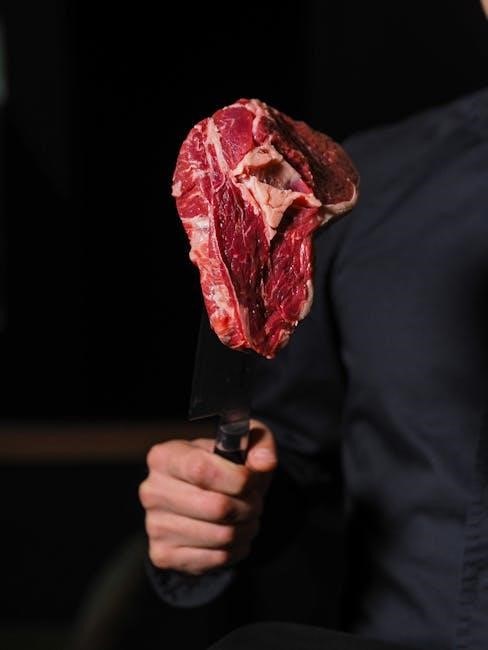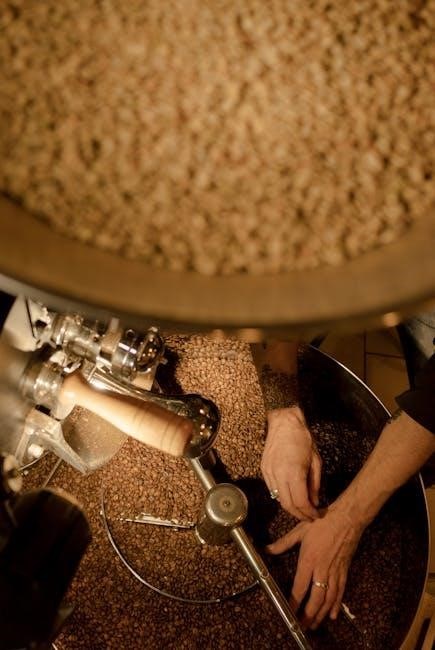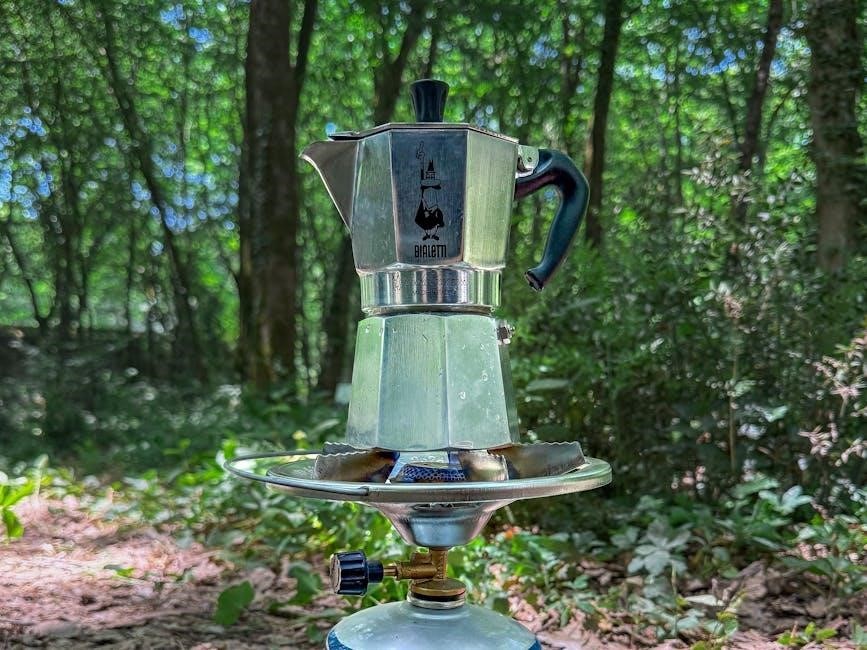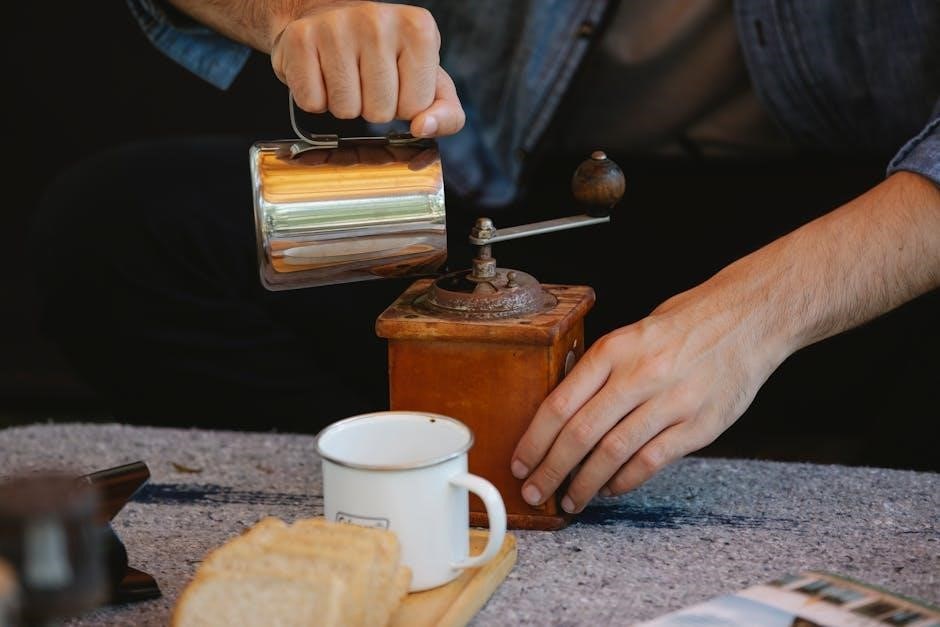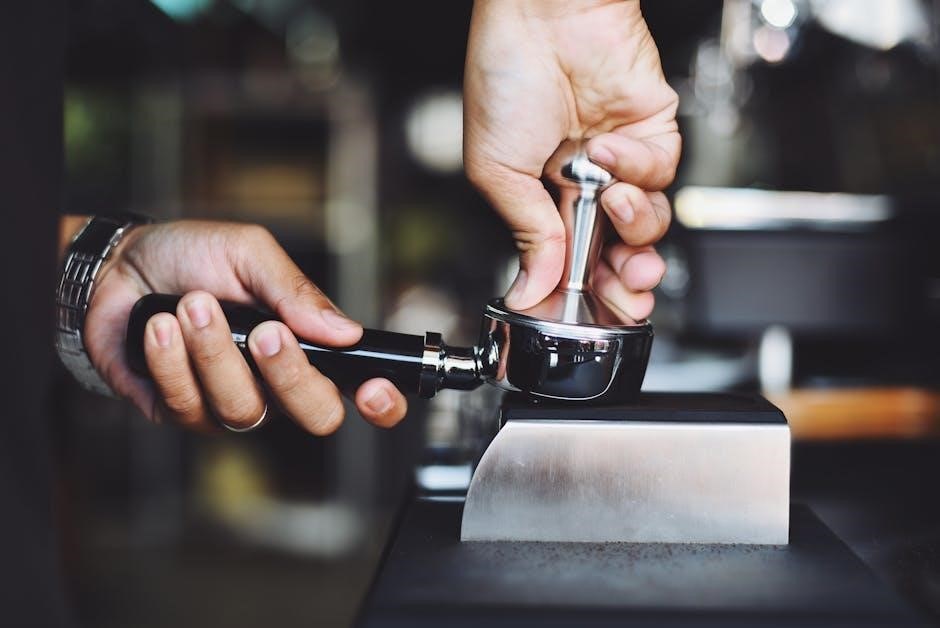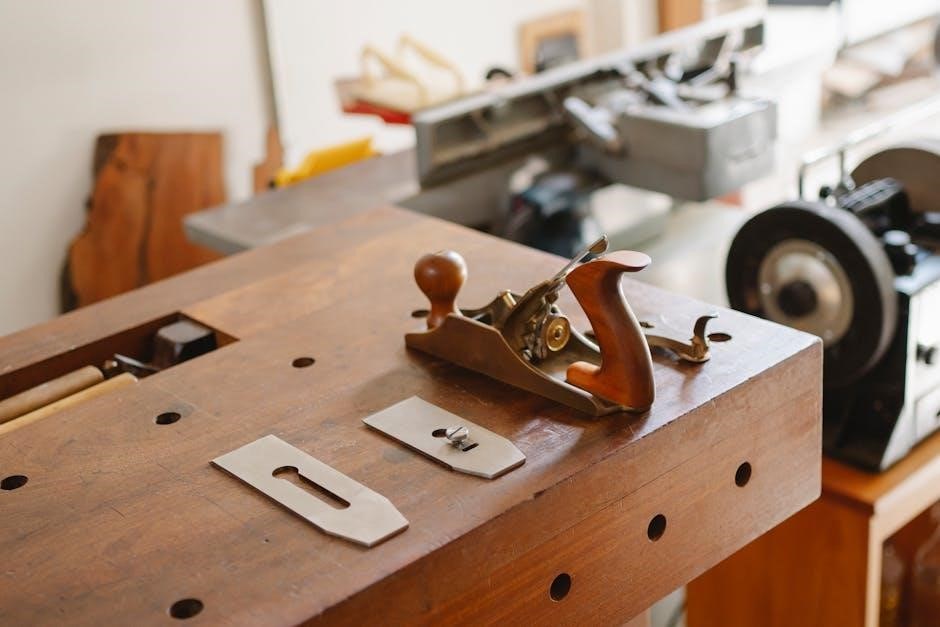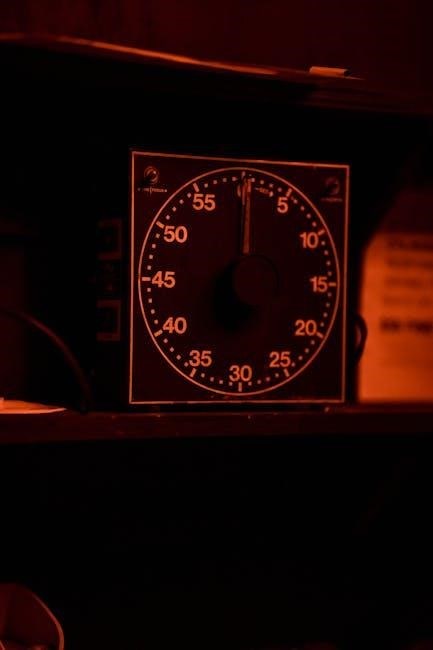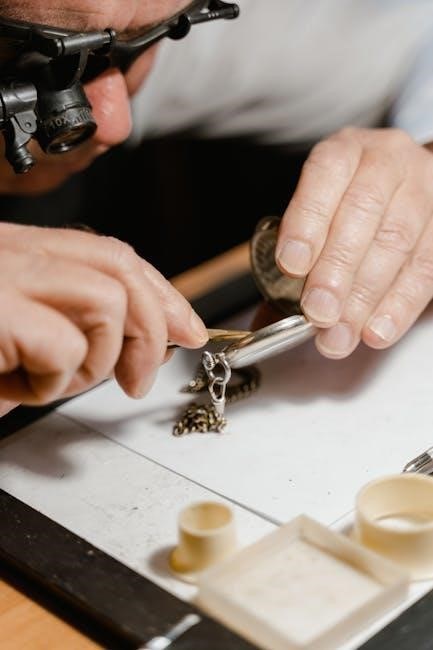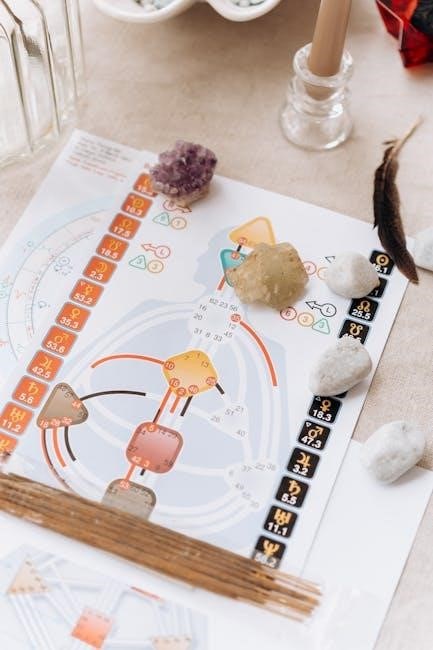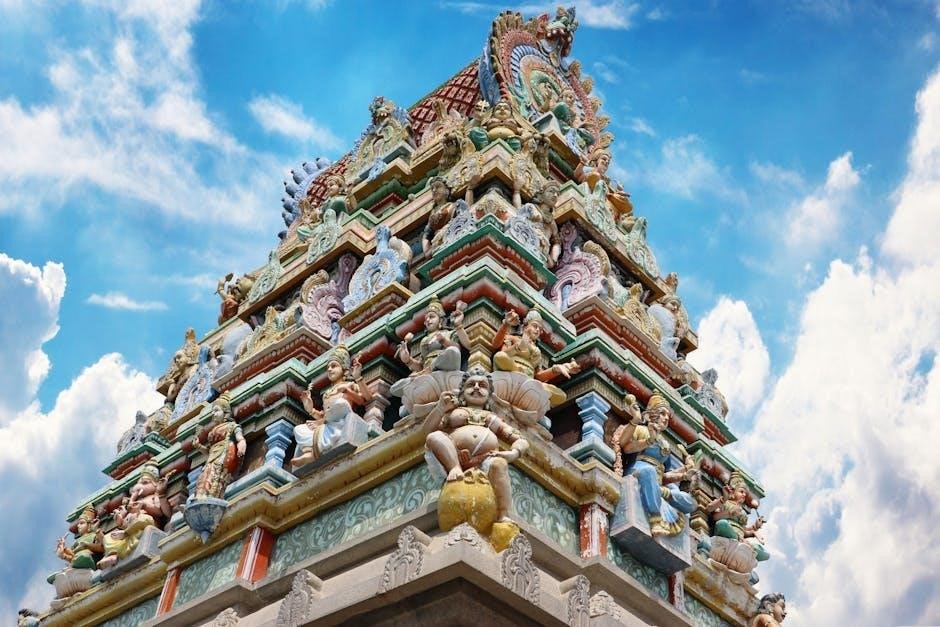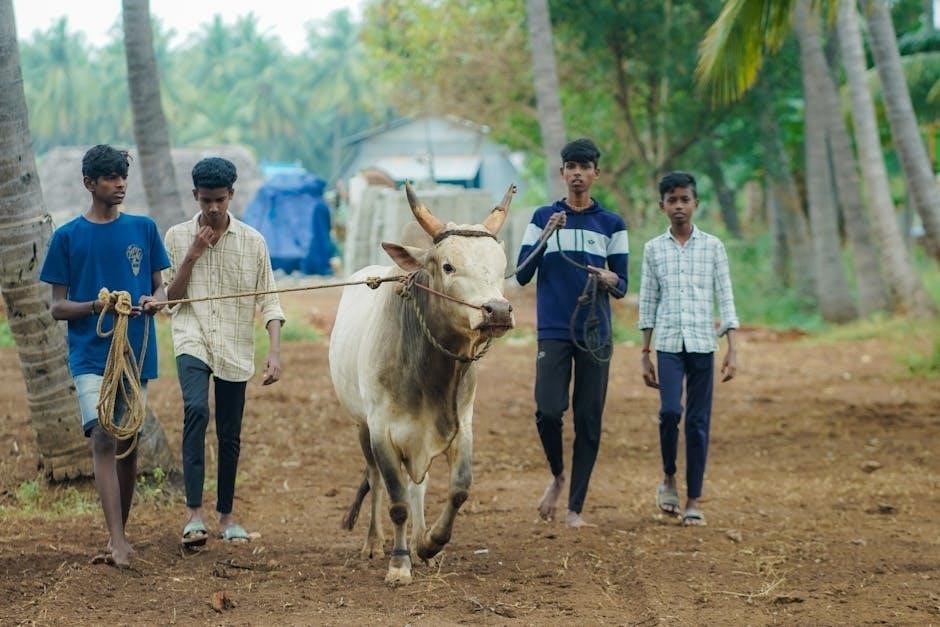Large cross stitch patterns offer detailed, visually striking designs, perfect for creating bold and decorative pieces․ They can be easily downloaded as free PDF files online, making them accessible for crafters of all skill levels, from beginners to experienced stitchers․
Sources for Free Large Cross Stitch Patterns in PDF Format
Discover a wide variety of free large cross stitch patterns in PDF format available online․ Websites like Fat Quarter Shop, LoveCrafts, and Herrschners offer extensive libraries of downloadable designs, catering to all skill levels․ These patterns are perfect for creating bold, detailed projects, from nature-inspired landscapes to festive seasonal themes․ Many platforms provide instant downloads, allowing you to start stitching immediately․ Additionally, online communities and forums often share free patterns, making it easy to find unique and creative designs․ Whether you’re a beginner or an experienced stitcher, these free resources offer endless inspiration and convenience for your next project․
Benefits of Using Large Cross Stitch Patterns for Beginners
Large cross stitch patterns are ideal for beginners due to their clear and detailed designs, which make it easier to follow and stitch․ The larger stitches and bold lines reduce the need for constant counting, minimizing errors․ These patterns often feature high-contrast colors, simplifying the learning process․ Additionally, large patterns cover more fabric, creating a sense of accomplishment as progress is visible quickly․ Many free PDF options are available, making it cost-effective to start․ The simplicity and forgiving nature of large patterns allow beginners to focus on technique without feeling overwhelmed․ They are a great way to build confidence and skills before moving to more complex designs․

Popular Themes in Large Cross Stitch Patterns
Large cross stitch patterns often feature vibrant and detailed nature-inspired designs, abstract motifs, and festive themes, appealing to various crafting interests and home decorating styles․
Nature-Inspired Designs: Landscapes and Wildlife
Nature-inspired large cross stitch patterns bring the outdoors into your stitching projects, featuring serene landscapes, majestic wildlife, and floral motifs․ These designs are perfect for creating bold, detailed pieces that showcase the beauty of the natural world․ With vibrant colors and intricate details, patterns like “The Lake” or “Lavender Farm” allow stitchers to capture the essence of scenic views and wildlife in their work․ These PDF patterns are ideal for crafters who enjoy blending artistry with the tranquility of nature, making them a popular choice for home decor and personalized gifts․
Abstract and Geometric Patterns for Modern Decor
Abstract and geometric large cross stitch patterns are perfect for adding a modern touch to home decor․ These designs feature bold shapes, vibrant colors, and intricate symmetry, creating visually striking pieces that align with contemporary aesthetics․ Ideal for stitchers who enjoy experimenting with creativity, these patterns offer a unique way to express personal style․ Many free PDF downloads are available, catering to both beginners and experienced crafters․ Whether it’s a minimalist geometric motif or a complex abstract design, these patterns allow for endless possibilities in creating artful and trendy decor for any room․ Their versatility makes them a favorite among those seeking to merge stitching with modern design trends․
Festive and Seasonal Large Cross Stitch Designs
Festive and seasonal large cross stitch designs are a delightful way to celebrate holidays and special occasions․ From Christmas trees and snowflakes to Halloween-themed motifs and Easter-inspired patterns, these designs bring joy and seasonal charm to any space․ Many free PDF downloads are available, offering a wide variety of themes to suit different holidays and events․ These patterns are perfect for creating decorative pieces like wall hangings, pillow covers, or gifts․ With vibrant colors and intricate details, they cater to both beginners and experienced stitchers․ Whether it’s a festive landscape or a whimsical holiday character, these large cross stitch patterns allow crafters to embrace the spirit of the season with ease and creativity․
Tools and Materials Needed for Large Cross Stitch Projects
Large cross stitch projects require sturdy fabric like aida cloth, embroidery floss, tapestry needles, sharp scissors, a hoop or frame, stitch markers, good lighting, and a printed pattern․ Additional tools include thread conditioner, a needle threader, and storage for organization; Patience and dedicated time are essential for completing these intricate designs․
Choosing the Right Cross Stitch Floss for Large Patterns
Selecting the right cross stitch floss is crucial for large patterns, as it ensures vibrant colors and durability․ Opt for high-quality, 100% cotton floss, like DMC or Anchor, which offers a wide range of colors․ For large designs, stranded cotton is ideal due to its thickness and coverage․ Pearl cotton can also be used for a softer, more textured look․ Consider using variegated floss for subtle color transitions․ Always check the strand count and material blend to ensure consistency․ Organize threads by color using bobbins or cards to keep your workspace tidy․ Proper floss selection enhances the visual impact and longevity of your large cross stitch project, making it a worthwhile investment․
Selecting Fabric for Large Cross Stitch Designs
Choosing the right fabric for large cross stitch designs is essential for a successful project․ Aida cloth and evenweave linen are popular choices due to their clear weave and ease of stitching․ Cotton fabrics, such as quilting cotton, are also suitable for large patterns․ Opt for a neutral or light-colored fabric to ensure vibrant thread colors pop․ Pre-wash and iron the fabric to remove sizing and prevent shrinkage․ For large designs, consider using a fabric with a higher thread count for sharper details․ Stretching or framing the fabric can help maintain tension and prevent distortion․ Selecting the right fabric ensures your large cross stitch project turns out crisp, colorful, and professional․
Essential Tools for Stitching Large Patterns
Stitching large cross stitch patterns requires the right tools to ensure accuracy and comfort․ A sturdy embroidery hoop or frame helps maintain fabric tension, preventing distortion․ Tapestry needles are ideal due to their blunt tips and large eyes, making threading easier․ Sharp, dedicated embroidery scissors are essential for cutting floss cleanly․ A magnifying lamp can reduce eye strain, especially for intricate details; Stitch markers or small clips can help manage excess fabric, while a needle threader aids in threading floss quickly․ A portable stitching bag keeps supplies organized, and a stitch counter or app helps track progress․ Having these tools on hand ensures a smooth and enjoyable stitching experience, even for the largest designs․
Top Websites for Downloading Free Large Cross Stitch Patterns
- Fat Quarter Shop offers a wide variety of free cross stitch patterns in PDF format․
- LoveCrafts provides hundreds of stylish and fun free cross stitch designs for all skill levels․
- Union Jack Stitches features an extensive library of free downloadable PDF patterns․
Featured Websites with Extensive PDF Libraries
Several websites stand out for their extensive collections of free large cross stitch patterns in PDF format․ Fat Quarter Shop offers a wide variety of designs, including seasonal and modern themes, perfect for crafters of all levels․ Another notable site is LoveCrafts, which provides hundreds of stylish and fun patterns, ideal for both beginners and experienced stitchers․ Additionally, Union Jack Stitches features a diverse library of free downloadable PDF patterns, covering categories like nature, abstract designs, and festive themes․ These platforms make it easy to find and download large cross stitch patterns, ensuring endless creative possibilities for your projects․
How to Navigate and Download Patterns from Popular Sites
To find and download large cross stitch patterns, visit websites like Fat Quarter Shop or LoveCrafts․ Browse their extensive libraries by category or search for specific themes․ Many sites allow free downloads without an account, while others may require registration․ Once you find a pattern, click the download link to access the PDF file․ Ensure your device has enough storage and a PDF viewer installed․ Some platforms offer additional tools, such as pattern previews or stitching guides, to enhance your experience․ Always check the file format and size before downloading to ensure compatibility with your needs․
Designing Your Own Large Cross Stitch Pattern
Designing your own large cross stitch pattern allows for unique creativity․ Use software like PC Stitch to convert images into stitchable designs, perfect for personal or gift projects․
Software for Creating Custom Cross Stitch Designs
Specialized software like PCStitch, StitchArtist, and GIMP enables users to create custom cross stitch designs․ These tools offer features like color palette management, stitch simulation, and pattern scaling․ They allow users to import images, convert them into stitchable charts, and adjust details such as thread colors and fabric type․ Many programs support large-format designs, making them ideal for intricate patterns․ Additionally, some software includes libraries of stitches and motifs to enhance creativity․ Once designed, patterns can be exported as PDFs for easy printing․ These tools empower crafters to bring their unique ideas to life, ensuring precision and customization in every stitch․ They are essential for creating large cross stitch patterns tailored to personal preferences or specific projects․
Tips for Converting Images into Stitchable Patterns
Converting images into stitchable patterns involves simplifying the design to translate colors and shapes into stitches․ Use software to analyze the image, reducing the color palette and defining clear contrasts․ For complex images, break them into sections to manage details effectively․ Resize the image to fit your fabric and thread count, ensuring proper scaling for large patterns․ Choose a suitable stitch type, such as full cross stitches for bold areas or backstitches for outlines․ Test the pattern on a small scale before stitching the full design to ensure accuracy․ These steps help create a clear, stitchable chart from any image, making it ready for PDF download and use in large cross stitch projects․
Printing and Using Large Cross Stitch Patterns
Large cross stitch patterns in PDF format can be printed on standard paper or scaled across multiple sheets for oversized designs․ Ensure proper alignment when tiling and use a hoop or frame for stability while stitching․ Always preview the pattern before printing to adjust settings for the best results․ Using high-quality paper ensures clarity, making it easier to follow the design․ Organize printed patterns in binders or digital folders for easy access and to prevent loss․ This method allows seamless stitching, even for intricate or large-scale projects, ensuring a professional finish every time․ Print and use patterns confidently for stunning results․ They are ideal for creating decorative home accents or personalized gifts․ With proper printing and organization, large patterns become manageable and enjoyable to complete․ Happy stitching!
How to Print Full-Size PDF Patterns
Printing full-size PDF patterns for large cross stitch projects requires careful setup to ensure accuracy․ Open the PDF in a viewer like Adobe Acrobat and select the “Actual Size” option under the print settings․ Choose “Fit to Printable Area” or “Tile Large Pages” if the pattern exceeds your paper size․ Adjust the layout to print on multiple sheets, then assemble them using a grid or reference marks․ Use high-quality paper for clarity and durability․ Preview the print to confirm alignment and scaling before proceeding․ Properly printed patterns ensure accurate stitching and a professional finish․ This method is ideal for managing large designs efficiently and achieving precise results․ Always test print a small section first to verify settings․ Happy stitching!
Organizing and Managing Large Pattern Files
Managing large cross stitch pattern files requires a systematic approach to maintain order and accessibility․ Start by creating a dedicated folder on your device, named clearly, such as “Large Cross Stitch Patterns․” Use descriptive file names, including the pattern title and date, to ensure easy identification․ Organize files into subfolders based on themes or projects․ Regularly back up your files to an external drive or cloud storage to prevent data loss․ Consider using PDF management tools to merge or split large files for easier handling․ Keep track of downloaded patterns with a spreadsheet or digital catalog to quickly locate specific designs․ Proper organization saves time and reduces stress when working on large stitching projects․ Stay tidy and efficient with your pattern collection for a seamless stitching experience․
Troubleshooting Common Issues with Large Patterns
Large cross stitch patterns can present challenges like file size and color matching․ Ensure accuracy by using high-quality PDFs and adjust thread colors to maintain design integrity․
Handling Large Files and Ensuring Accuracy
Working with large cross stitch patterns in PDF format can present challenges due to file size and complexity․ To ensure accuracy, start by downloading high-quality, full-resolution PDFs from trusted sources․ Before printing, check that your software correctly renders the pattern without pixelation or distortion․ For extremely large designs, consider splitting the pattern into smaller, manageable sections using tools like Adobe Acrobat․ Always verify the stitch count and color chart to maintain consistency․ If errors occur, refer to online communities or forums for troubleshooting tips․ Ensuring your printer settings are correct and using a consistent thread palette will help achieve professional results․ Proper organization of files and materials is key to a smooth stitching experience․
Solving Color and Thread Matching Problems
When working with large cross stitch patterns in PDF format, color and thread matching can be challenging․ Start by ensuring your monitor is calibrated for accurate color representation, as screens can vary in displaying hues․ If the PDF is low resolution, seek a high-quality version to avoid color discrepancies․ Utilize online color conversion tools to match digital colors to specific thread brands like DMC or Anchor․ For specialty threads, consider substitutions by referencing charts or seeking advice from stitching communities․ Work in well-lit environments, preferably with natural light, to ensure color accuracy․ Print the pattern’s color chart for physical comparison with your threads, and check for any errata from the designer․ Explore stitching apps for real-time thread matching and reach out to online communities for tailored advice․ By combining calibrated displays, high-quality patterns, and community support, you can effectively solve color and thread matching issues․

Inspiration and Community for Large Cross Stitch Enthusiasts
Join online forums and social media groups to connect with fellow stitchers, share ideas, and discover inspiration for your large cross stitch projects․ Many websites offer free PDF patterns and tips, fostering creativity and collaboration within the stitching community․
Joining Online Communities for Support and Ideas
Online communities provide a vibrant space for cross stitch enthusiasts to connect, share, and inspire․ Platforms like forums, social media groups, and specialized websites offer extensive libraries of free PDF patterns, tutorials, and tips․ These communities are invaluable for beginners seeking guidance and experienced stitchers looking for fresh ideas․ Members often post their finished projects, sparking creativity and encouraging others to try new designs․ Additionally, many communities host challenges and events, fostering collaboration and motivation․ By joining these groups, stitchers can gain access to resources, feedback, and a supportive network that enhances their crafting journey and keeps them inspired․
Sharing Your Finished Projects with the Stitching Community
Sharing your finished large cross stitch projects with the stitching community is a great way to showcase your creativity and inspire others․ Many online platforms and forums allow you to upload photos of your work, providing a space for feedback and admiration․ Sharing your projects can also help others gain ideas and motivation for their own stitching journey․ Additionally, some websites feature galleries where stitchers can display their completed pieces, creating a sense of accomplishment and connection․ By sharing your work, you contribute to the vibrant and supportive stitching community, fostering inspiration and camaraderie among crafters worldwide․

